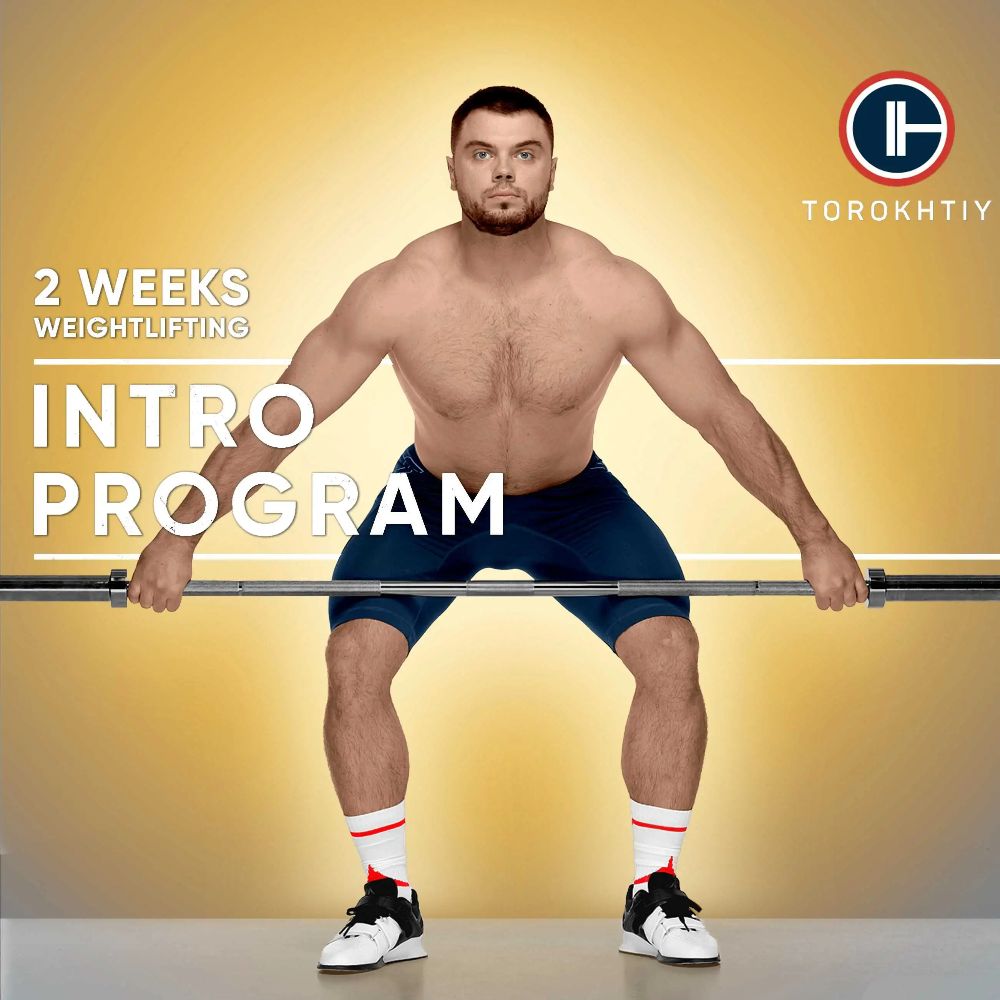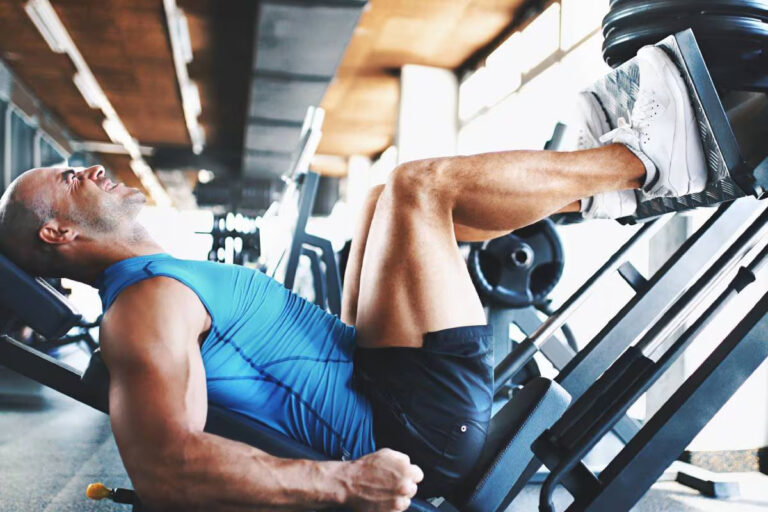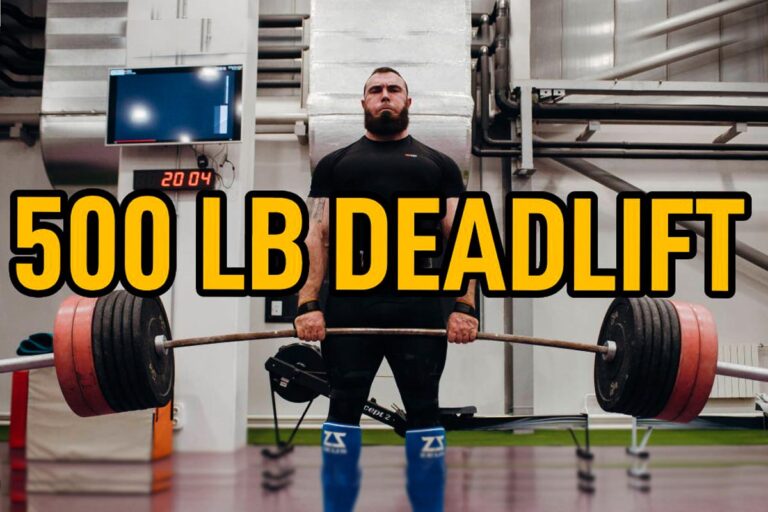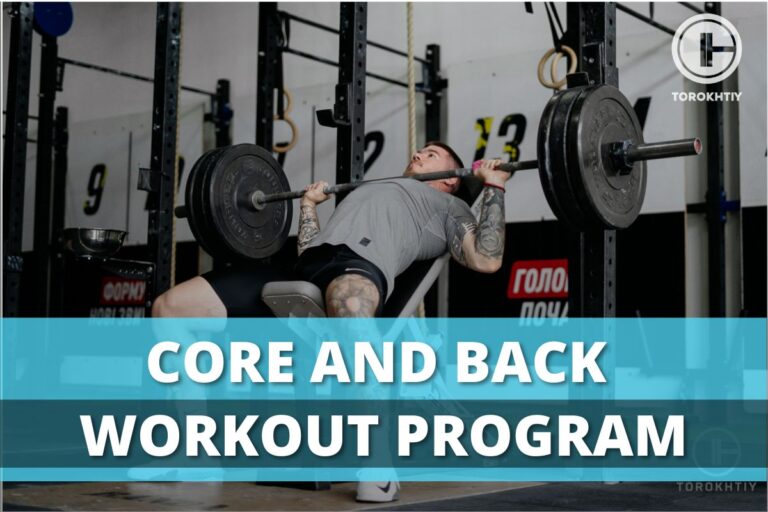How To Warm Up Before Lifting: Elevate Your Lifts
Understanding the importance of how to warm up before lifting is crucial for anyone delving into the world of weightlifting. Just as a musician tunes their instrument before a show, an athlete must prepare body before diving into intense lifting. This article sheds light on why and how to warm up for weightlifting ensuring a productive and safe training experience.
To understand how to warm up before lifting start with 2-5 minutes of light cardio, then engage in dynamic stretches, focusing on targeted muscles. Finish by performing a few sets with lighter weights of your lifting routine. This process ensures safety and effectiveness during your session.

Why Do You Need To Warm Up Before Weightlifting?
Embarking on a weightlifting journey without a proper warmup is akin to setting off on a long road trip without checking your car`s. Just as our vehicles require a preliminary check to ensure a smooth ride, our bodies too need a pre phase to guarantee an efficient and safe training. The part of the workout often underrated or hastily done is the strength training warm up. It serves as a bridge between a state of calm and intense effort of weightlifting, giving our bodies a chance to gradually adapt to the upcoming load. Without this transition, we risk not only our performance quality, but also our overall well-being.
Here’s why the warm-up is a non-negotiable aspect of weightlifting:
1. Injuries Prevention
Starting lifting cold can make muscles more prone to strains and ligaments susceptible to tears. A warming up activity increases blood flow to the muscle system, prepping it for demands of lifting and reducing the risk of injury.
2. Improved Performance
Warm up for strength training primes the body for action. As your body temperature increases, it enhances muscle elasticity, which in turn can lead to way better strength and power output during lifting sessions.
3. Joints Range of Motion
Lubricating the joints through warming up can ensure you achieve optimal ROM in movements, allowing for better technique and the ability to engage more muscle fibers.
4. Mental Preparation
As athletes transit from rest state to working, the warming up before lifting also provides a window to mentally tune. It is time to set training goals, visualize important sets, and prepare for the challenges needed now.

5. Neural System Activation
A proper warm-up can fast-track the communication between brain and body. Meticulous warm-up acts as a conduit strengthening the communication pathways between the brain and muscles. As you begin to move and stretch the brain sends signals faster and more efficiently preparing the neuromuscular system for the tasks ahead.
This enhanced neuromuscular activation insures not only that muscles contract in a coordinated manner, but also that they do so with the greatest possible efficiency. The outcome? Superior muscle strength, agility and coordination during lifting session, minimizing the risk of mistimed movements or imbalances that could lead to injuries.
6. Advanced Metabolic Adjustments
Jumping straight into intensive lifting can be a shock to the body. Warming up initiates gradual adjustments in metabolism, preparing the body to efficiently produce and consume energy resources during training.
So, should you warm up before lifting? The answer is – yes, of course!
How Long Should A Warm-Up Last Before Training?
Weightlifting warm up is paramount. Not only because it is a prime body for performance, but also it mitigates the risk of injuries. The training volume and intensity plays a crucial role in determining the warm-up duration and specifics. Check the guide to adapt your warm-up protocol based on session agenda:
1. Light Session
Duration: 8-10 minutes
Features: Light technique focused or recovery sessions can typically involve light weight and high reps of focused on refining technical elements. In this case warm-up can be a bit shorter and focused on dynamic stretches that mimic the weightlifting movements.
2. Moderate Training
Duration: 12-15 minutes
Features: As the load scales up, so should thу warm-up duration. Feel free to start with 5 min cardio. Follow with dynamic stretches and a few movement patterns related to the day`s training plan.
3. High-Intensity Training
Duration: 15-20 minutes
Features: Preparing body for intensive workout requires a more extensive warmup. Start with cardio to raise core body temperature, then employ dynamic stretches and mobility drills that focus on ROM. Spent enough time and sets on 50-60% to prepare the neuro system for the heavy lifting ahead.

4. Complex Or Compound Lifts
Duration: 15-20 minutes
Features: Complex as well as Olympic lifts (Snatch, Clean and Jerk) engage multiple muscle groups and joints. They necessitate a longer, more targeted warm-up. Start with general cardio, followed by a thorough set of dynamic mobility drills targeting all major joints. Add specific movements or exercises elements to help refine technique and get the body in sync.
Remember, your warm-up is a prep part, setting the tone for the entire workout. By tailoring it according to the volume and intensity of your plan, you pave the way for a productive, safe and effective lifting routine.
How To Warm Up For Weightlifting?
Every experienced athlete knows that the path to an effective, injury-free workout starts with a solid warm up for weightlifting. Yet, with a myriad of warm-up options out there, where does one start? Let’s dive into the essential types of warm-ups and key considerations for weightlifting.
Warm up types:
1. Cardiovascular Warm-Up
Purpose: increase overall body temperature, heart rate and blood flow to muscles.
Examples: 5-10 minutes of fast walking, comfortable jogging, cycling, rowing etc.
2. Dynamic Stretching And Mobility Drills
Purpose: improve joint range of motion, activate muscle groups and prepare the body for specific motions of weightlifting.
Examples: leg swings, arm circles, walking lunges, high knees, inchworms, foam rolling.
3. Functional Movement Patterns
Purpose: prepare the nervous system for the types of movement that are planned during the main lifting.
Examples: bodyweight squats before barbell squats, push-ups before bench press, glute bridge before deadlift.
4. Sports Specific Drills
Purpose: drills specifically mirror the movement in weightlifting and enhance coordination.
Examples: snatch balance with PVC before Olympic snatch, box jumps before power clean.
5. Warm-Up Sets
Purpose: gradually acclimate the body to the load during the main workout.
Details: begin with an empty bar and go up, using 50-60% of your work and gradually increase the weight with each subsequent set.
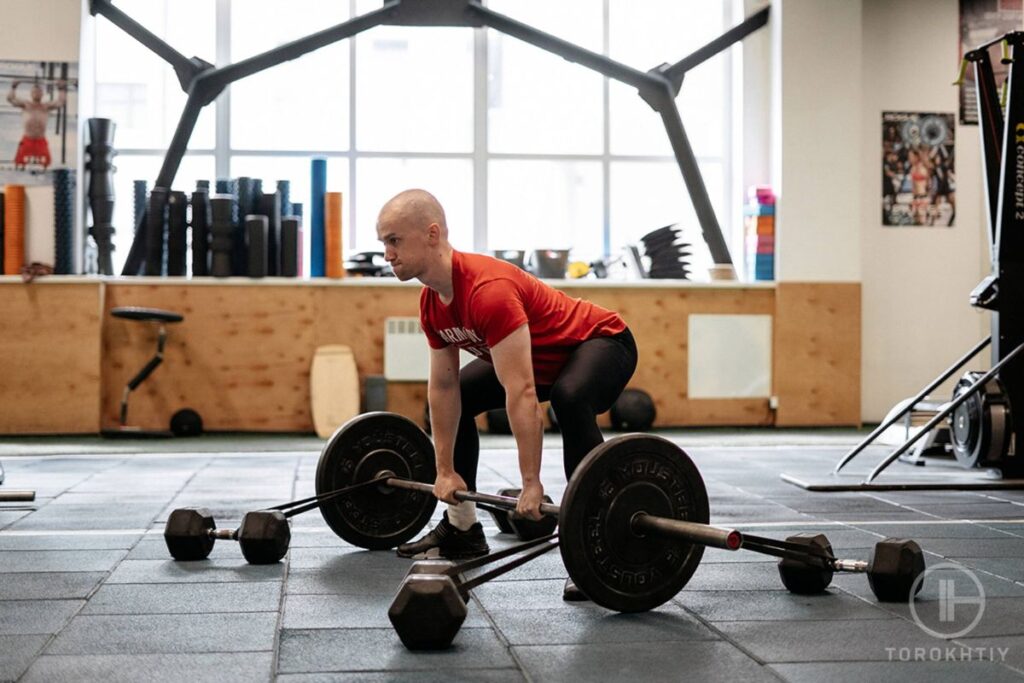
Key Things To Keep In Mind
Personalize your warm-up. The protocol of the ideal warm up depends on various factors including the specific plan, current fitness level, any injuries or limitations and even environment temperature. Whether you train for absolute strength, power or strength endurance, training objectives will dictate your warm-up flow. Obviously, a beginner will require a different warm-up intensity and duration than a seasoned athlete. The temperature and humidity can play a significant role. Cold gyms necessitate longer prep to achieve the same level of body readiness.
Prioritize movement quality. Your warm up it’s not just about getting sweaty. It’s about moving with purpose and precision. Pay attention to details, especially during functional movements and sport specific drills, attention to technique is vital.
Keep it dynamic. Before lifting emphasize dynamic stretches and mobility drills over static. Static stretches, where you hold a position for an extended period (over 45 sec) can temporarily decrease strength and power making them better suited for a cool down.
Progressively increase intensity. Start your warm-up at low intensity and gradually increase it. This approach ensures that by the end of your warm-up you’re mentally and physically primed for the main load.
Time it right. A warm-up should leave you feeling energized and ready, not fatigued. Depending on intensity of your upcoming workout and your needs, warm-up can last anywhere from 10 to 30 minutes.
Listen to your body. This can’t be emphasized enough. If a particular muscle group feels exceptionally tight or if you feel off in any way, consider extending your warm-up or focusing more on that specific area. Every day is different: what worked yesterday might not be suitable today. Adjust based on how the body responds to ensure safety and effectiveness.
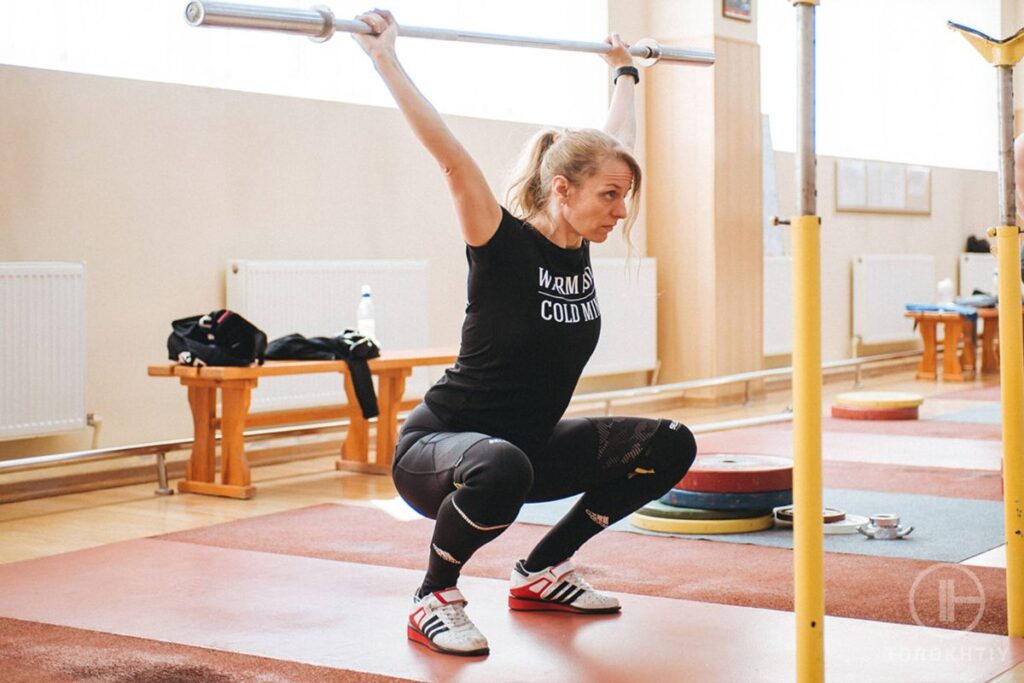
The Best Exercises To Warm Up Before Weightlifting
A well-rounded warm-up is the cornerstone of an effective weightlifting session. It primes the body, reduces injury risk, and lays the foundation for a productive workout. Here are the best exercises to warmup before lifting weights:
1. Jogging in Place
Jumpstart to warm up with two minutes of jogging in place. This elevates the heart rate and gets blood pumping to muscles throughout the body.
2. Jumping Jacks
A classic for a reason, jumping jacks engage both upper and lower body aim for 30 seconds to enhance cardiac circulation.
3. Arm Circles
Perfect for shoulder mobility. Perform arm circles slowly and fast both clockwise and counterclockwise for 30 seconds each to prep for upper body lifts.
4. Leg Swings
Holding onto a support swing one leg forward, backward and to the sides for 10-15 reps and switch legs. This movement helps in opening up the hips and mobilizing hamstrings.
5. Dynamic Lunges
Step forward or backward into a lunge, ensuring your knees are aligned with your ankles. Repeat for 10 lunges on each leg emphasizing form and depth.
6. Inchworms
Start in standing position, bend forward, place palms on the floor and walk your hands into a plank. Walk your feet back towards your hands. Repeat five times to engage the core and stretch hamstrings.
7. Torso Twists
With feet shoulder width apart, twist your body from left to right, keeping hips stable. This awakens the core and lower back, which is essential for compound movements.
8. Air Squats
Emulating the motion of barbell squats, perform 15 reps. This primes the quads, glutes and hamstrings.
Incorporating these exercises in your pre-weightlifting routines ensures a holistic warm up. Muscles, joints and the vascular system will be ready, setting the stage for effective and safe lifting.
Weightlifting Warm Up Routine
Here is a concise weightlifting warm-up routine building up the exercise discussed before:
1. Two Minutes Cardio Boost
Start with jogging in place for one minute transition into jumping jacks for the next minute to elevate the heart rate rate and ensure full body engagement.
2. Two Minutes Upper Body Activation
Start with arm circles 30 seconds each in both directions. Follow with torso twists for one minute to engage the core and warm the shoulder region.
3. Three Minutes Lower Body Activation
Initiate with leg swings 15 reps for each to enhance hip mobility. Move to dynamic lunges 10 lunges on each leg to activate glutes and quads. Conclude with bad kicks for 30 seconds to stimulate the hamstrings.
4. Two Minutes Functional Movements
Perform inchworm for one minute engaging the core and performing a good stretch. End with air squats for one minute grounding your weightlifting movements.
In total this warm-up routine offers us a balanced approach, ensuring both the upper and lower body are adequately prepared for lifting. Always remember to adjust based on your specific needs or target muscles for the day.
🔻FREE OLYMPIC WEIGHTLIFTING PROGRAM
Get started on your weightlifting journey with the Torokhtiy Free Olympic Weightlifting Program! Perfect for beginners, this FREE 2-week program focuses on Snatch and Clean & Jerk techniques. Suitable for all levels, it’s designed for muscle and technical preparation.
Download now for FREE!
FAQ
Do I Need To Warm-Up For Weight Lifting?
Definitely yes, warming up before lifting is essential. It increases blood flow, prepares muscles for activity, reduces risk of injury and improves performance. Start with light cardio and dynamic stretches targeting the muscles your plan to load.
How Do You Warm-Up For Weightlifting In The Morning?
For a morning weightlifting session start with 8-10 minutes of light cardio to raise your body temperature. Follow this with dynamic stretching and mobility drills focusing on big muscle groups and joints. Perform leg swings, arm circles, torso twists, hinges, air squats etc. Lastly perform 2-4 sets of your major exercises, using lighter weights. This routine awakens the body, improves flexibility, activates the neural system and prepares for the forthcoming load.
Conclusion
In the realm of weightlifting, preparation is paramount. Warming up not only readies the body physically, but mentally allings one’s focus to the tasks ahead. Smart warm-up mitigates injury risks and primes the body for a peak performance. Always prioritize this integral step for a fruitful and injury free lifting session. Feel free to share your ideas about warm-up approaches, leave comments and ask questions below.
Also read:
- What Is a Deload Week in Weightlifting
- Power Clean vs Deadlift
- Snatch vs Clean
- Critical Weightlifting Mistakes
References:
- Rolf Adelsberger, Effects of stretching and warm-up routines on stability and balance during weight-lifting (NCBI, 2014 Dec 20) https://pubmed.ncbi.nlm.nih.gov/25527262/
- BRYAN CHRISTENSEN, The Effect of Static Stretching, Mini-Band Warm-Ups, Medicine-Ball Warm-Ups (NCBI, 2020 Feb 1) https://www.ncbi.nlm.nih.gov/pmc/articles/PMC7039492/
- ChenGuang Wei, A Plyometric Warm-Up Protocol Improves Running Economy in Recreational Endurance Athletes (NCBI, 2020 Mar 12) https://www.ncbi.nlm.nih.gov/pmc/articles/PMC7080849/
- Matt Parr, Effect of a gluteal activation warm-up on explosive exercise performance (NCBI, 2017 Jul 24) https://www.ncbi.nlm.nih.gov/pmc/articles/PMC5530111/
- Matthew John Barnes, Effects of different warm-up modalities on power output during the high pull (NCBI, 2016 Jul 11) https://pubmed.ncbi.nlm.nih.gov/27398685/
Why Trust Us?
With over 20 years in Olympic Weightlifting, our team does its best to provide the audience with ultimate support and meet the needs and requirements of advanced athletes and professional lifters, as well as people who strive to open new opportunities and develop their physical capabilities with us.
By trusting the recommendations of our certified experts in coaching, nutrition, dietology, and sports training programming, as well as scientific consultants, and physiotherapists, we provide you with thorough, well-considered, and scientifically proven content. All the information given in the articles concerning workout programming, separate exercises, and athletic performance, in general, is based on verified data. We ensure that you can rely on our professionals’ pieces of advice and recommendations that can be treated as personalized ones which will benefit you and fully meet your needs.
The product testing process is described in more detail here
Author: Sergii Putsov
Head of Sport Science, PhD
Best Results: Snatch – 165 kg,
C&J – 200 kg
Sergii Putsov, Ph.D., is a former professional weightlifter and National team member, achieving multiple medals in the 94 kg weight category at national competitions. With a Master’s degree in “Olympic & Professional Sport Training” and a Sport Science Ph.D. from the International Olympic Academy, Greece, Sergii now leads as the Head of Sport Science. He specializes in designing training programs, writing insightful blog articles, providing live commentary at international weightlifting events, and conducting educational seminars worldwide alongside Olympic weightlifting expert Oleksiy Torokhtiy.

